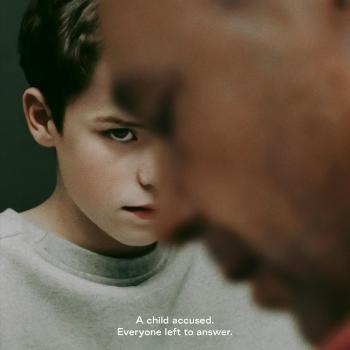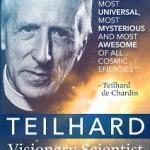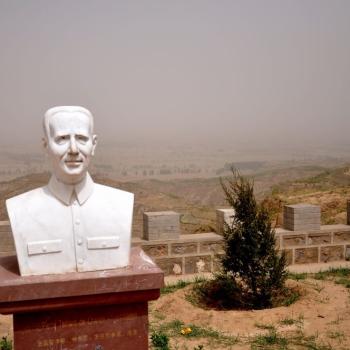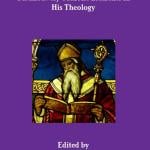
Ryne Pearson’s story Knowing swept the box office last weekend and set the blogosphere on fire with chat about what the movie means. Ryne developed the original story and is one of four writers who scripted the film. In my interview with him this morning, he gave generous praise to his co-writers Juliette Snowden, Stiles White and Stuart Hazeldine.
Despite initial disparaging reviews, Knowing seems to have caught the popular imagination and the popular religious imagination as well.
Knowing tells the story of an MIT professor played by Nicholas Cage who has lost his wife and wonders, with his young son, if there is a hereafter. He sets up a dualistic scenario for his class: either all is determined, that is, set in place and happening according to a plan or everything is just random. When a 50 year-old time capsule is opened and a page of numbers written by a strange little girl discovered, John begins to analyze the numerical sequences. All of them add up to natural and man-made disasters that occurred over the past five decades and three more are predicted. John thinks he can intervene and stop the events and realizes that the universe is bigger, so much bigger, than he.
My major criticism of the film is that the main actors and “heroes”, if you will, are all white people. And of course, everything is focused on the United States, though the story and action encompasses the whole world, the universe and all possible universes in creation.
Australian Alex Proyas (I, Robot) directed – and did an excellent job. The film is so good it could have been made by M. Knight Shyamalan in his heyday of The Sixth Sense and Signs.
What fascinated me about Knowing are all the visual biblical motifs, especially from the apocalyptic books of the Bible, from Daniel (especially chapter 4), and the book of Revelation: trees, stones, the cosmos, water, light, the sun.
Another aspect of the film that I appreciate very much is that it treats the end of the world without fear. John’s father is a pastor and John has not spoken to him for a long, long time. As the film nears its conclusion, John calls his father, Rev. Koestler (Alan Hopgood) and warns him to find shelter, fast! Go deep underground! Because a disaster is coming…. But his dad tells him that if it is his time to go, he is ready; he is not afraid. The pastor’s belief in the next life is profound and filled with peace. And he quietly says to John, “I am ready. Are you?”
Rather than the “Left Behind” or Plymouth Brethren approach to the end of the world that is based on the belief that one is afraid of God and what may come. Or afraid that God may willy-nilly pass over a person, no matter how faithful that person has tried to be, because he is not included in the “numbers” that are “saved”, Knowing seems characterized more by Catholic or mainstream Protestant theological sensibilities here – even if this was not intended. The “end” will indeed come for each of us when we die; and when we die, God will be with us. The thing is: to be ready, to live a life knowing, believing in life after death. The new heavens and a new earth will come about, but because of love, not because of fear.
Ryne Pearson is a screenwriter and a practicing Catholic who went to public school and attended CCD (catechism classes). He married into a large Irish Catholic family and his wife’s two uncles are priests, one of whom is Father Austin Doran, pastor of our Lady of Grace church in Encino, and the other is Father Brian Doran at Holy Angels Church of the Deaf. Ryan, his wife and two children are active in their parish, St. Emydius in Lynwood, CA.
I had the opportunity to interview Ryne this morning.

Sr. Rose: Did you go into this to write a religious story, or one with a rather explicit theological dimension?
Ryne Pearson: I approached this not as a message movie or anything like that. The idea came to me in the form of a question: if you know that something everything is going to end, doesn’t this change the framework of how you look at your life? How you live your life? Change the questions? You cannot help but think that there is something bigger – and there are no atheists in a fox hole.
SR: So this is more of a movie about existential questions?
RP: In the original script John had lost his wife and he had the question: what if her death was predicted and if I had found it sooner I could have stopped it? It was a small film that focused on John’s journey of dealing with death and the questions it raises.
SR: So, how is the final film different from your original story?
RP: My original story was on a much smaller scale but the director, Alex Proyas, made it an epic and spectacle and raised the stakes of the questions for John because bigger things are going on than his own world.
SR: The production notes mention that one or two of the actors think the environment and human responsibility for the end of the world is a key theme; do you agree?
RP: The good thing about the way the film turned out is that people can read different things in it, and make meaning according to their own lives, experiences, and beliefs. Take the ending, for example, I did not write that, but it worked out; Alex Proyas is responsible for this.
SR: I see you are a novelist, that you wrote Simple Simon, the book on which the 1998 film Mercury Rising is based. What are your other credits?
RP: You know, in this business 90-98% of scripts don’t move beyond being written or even optioned. You also can work on a lot of projects and not receive credit. I worked on The Day Earth Stood Still (2008) and The Eye and I am finishing my sixth novel.
SR: Tell me about the rabbits in the movie; what did these mean?
RP: As a writer you finish a script, you hand it in and you move on. I didn’t write in the rabbits. And I don’t want to interpret the film for anyone, but it could be saying that there is a relationship between people and the animal world, all of creation. Someone else could read it as life going on in a new way. My own interpretation is that it is like Noah who had a pair of all the animals on the ark; they went on two by two. There is hope; life will go on.
SR: What is your response to the way the film is being received?
RP: I didn’t see the finished version until opening day and I was really pleased. Even after a week’s worth of Cage-hate from critics, including his hair, I had a feeling it would do well. Box office is one thing, but no one anticipated the discussion about this move and as a writer you can’t ask for something like this – real interest and people talking about your film. Also, people see different things. When my wife and I came out of the theater she commented on the “wings” on the characters that seem like aliens; I hadn’t even noticed the wings! All that was Alex’s doing.
SR: I think the art direction may garner some awards – the “wings” demonstrate this. But what are the blogs saying?
RP: One exchange really made me laugh and appreciate that people can get so much out of a film. One person wrote: “If those creatures were angels, then they didn’t need a spaceship because angels don’t have bodies!” And someone replied, “Yes, but those were two little kids who had bodies and they would need a spaceship to travel!”
SR: At its heart, isn’t this a movie about the inevitability of death, about not being afraid to die, that God is present, provident and caring? That there is a purpose to life: love, family and that we will be together again, forever?
RP: Sure. But my favorite part of the movie is when John returns to his father and says as they reconcile, “I know it’s not the end.”
SR: This film really seems to be about the great existential questions about death.
RP: Sometimes there is that view that Hollywood movies won’t go all the way to the question of what happens after death, or when creation is spent what might happen or exist. Here the movie goes there. At the end of this film there would be nothing left, so you had to use the characters and their perspectives. The audience is free to take the view of the character: to deny or be angry or be unsure – or to believe.
SR: I saw the film with my associate, Sr. Hosea. We hadn’t noticed the rating before going, but she thought it might be an “R” while I held out for a “PG-13” because there was no language, sex, or bad language. There was great peril, however.
RP: I think the blood and language has a lot to do with the MPAA rating, but this is a very, very intense movie that probably ws on the line between PG-13 and R. The airplane crash was especially intense.
SR: One of my favorite interview questions is: How do you keep your core in the entertainment industry?
RP: To be honest I look at being a screenwriter as a job. And my family is important to me. I am very fortunate to have this job as a writer because it allows me to work at home and be close to my family. But, you know, the most fun job I ever had was as a plumber (laughing). I got to crawl around under houses and get all dirty.
SR: But you love writing.
RP: Some think Hollywood people aren’t very deep, and maybe some are not. But I love this job but I get to interact with a lot of smart people and very nice people as well.
SR: Do you have a favorite saint?
RP: It would have to be St. Patrick because of my family and it was the day my son was supposed to be born – but he waited two more days instead and was born on St. Joseph’s day!
SR: What’s your favorite book?
RP: As a writer my favorite book is not about how to write but On Writing (2000) by Stephen King. It’s about being a writer.













